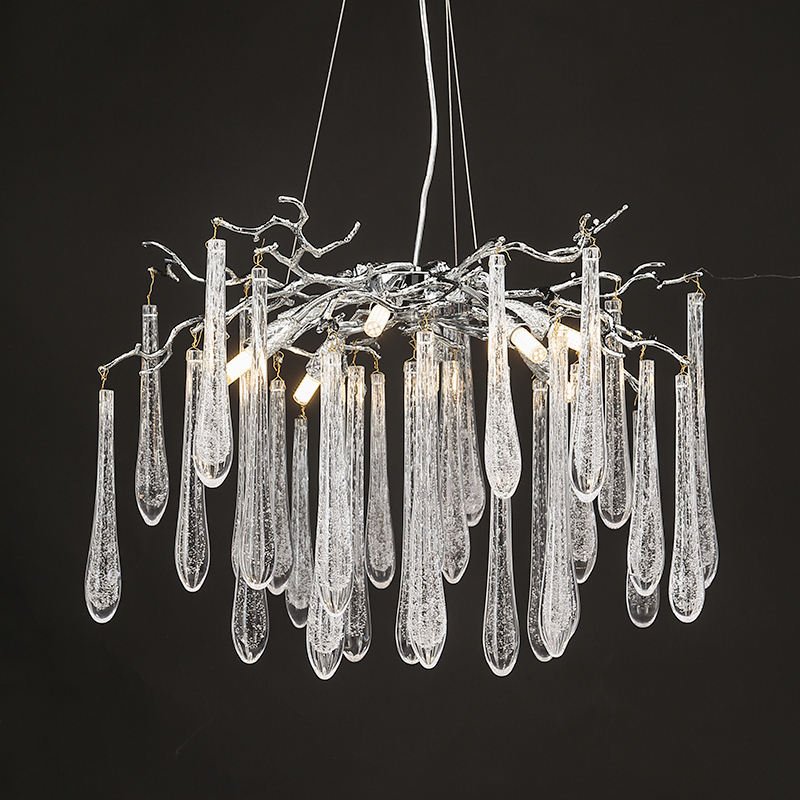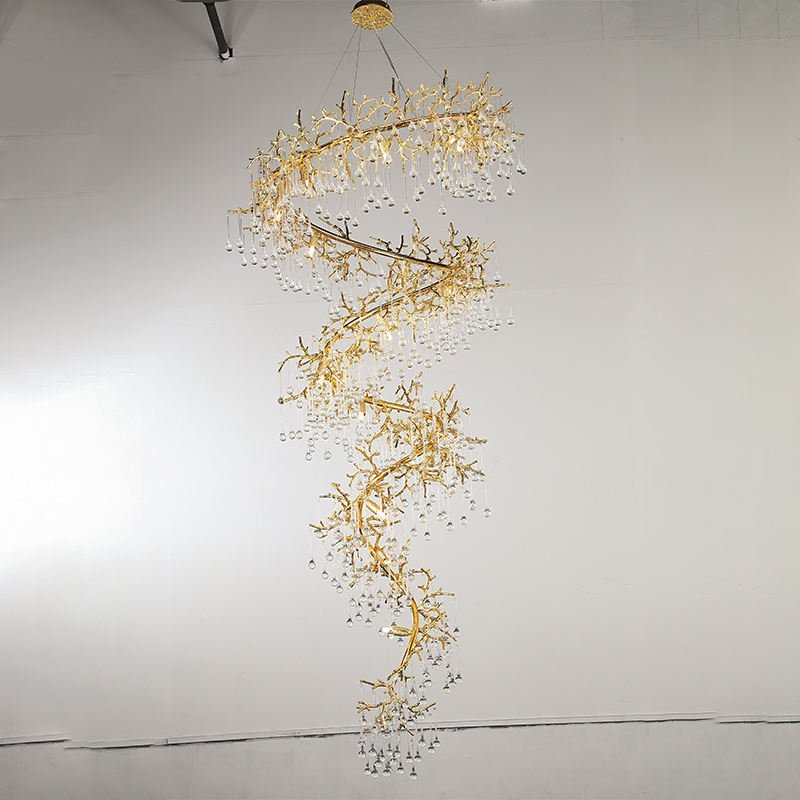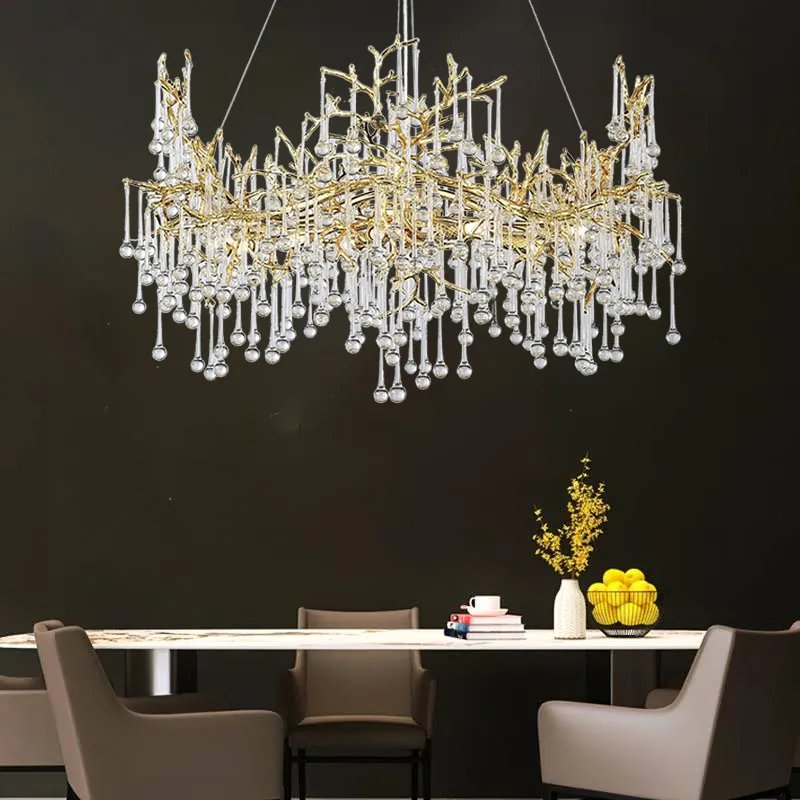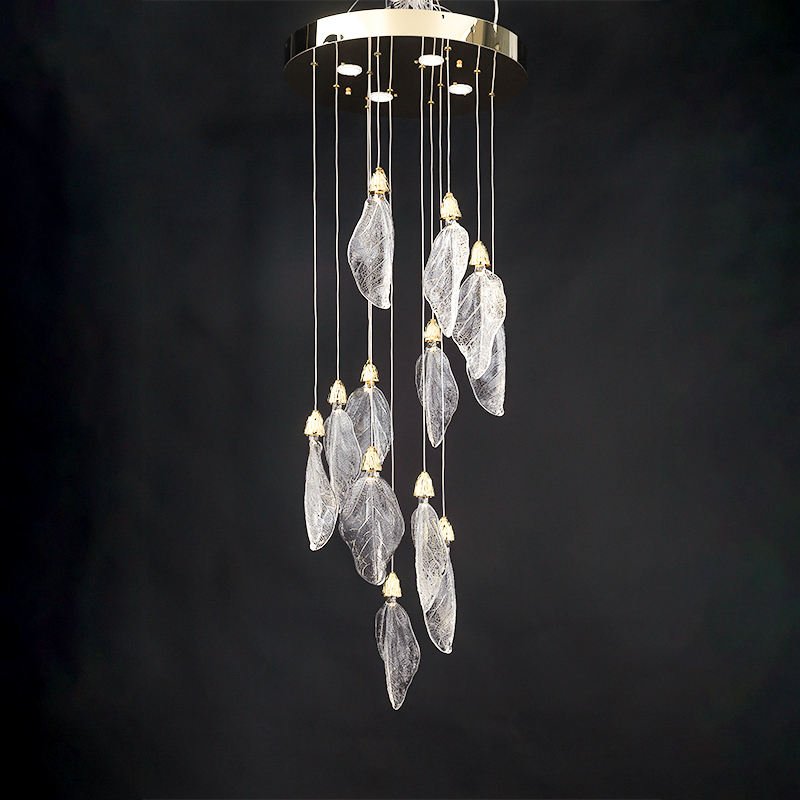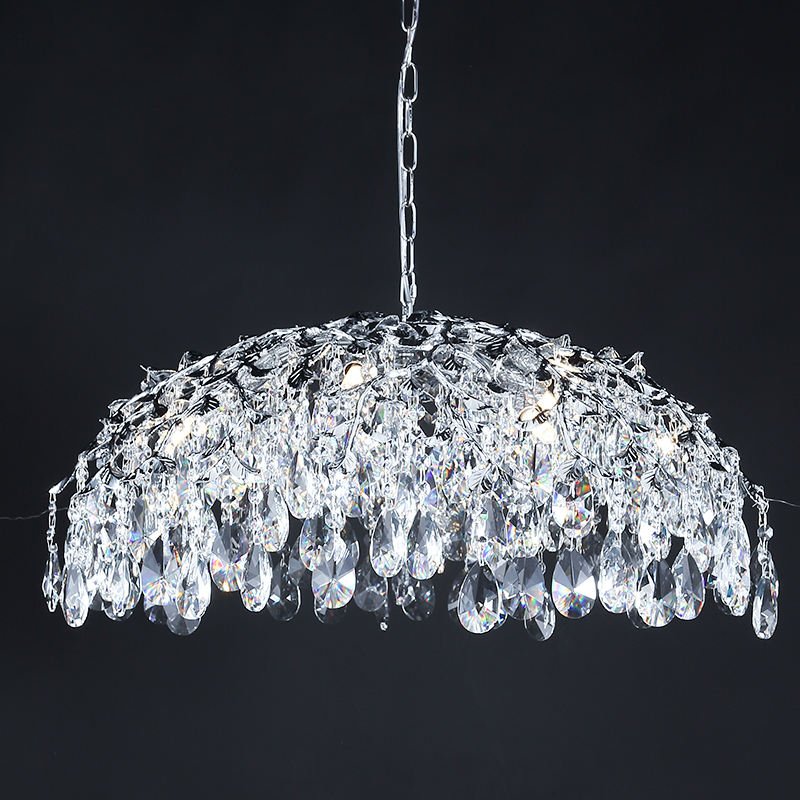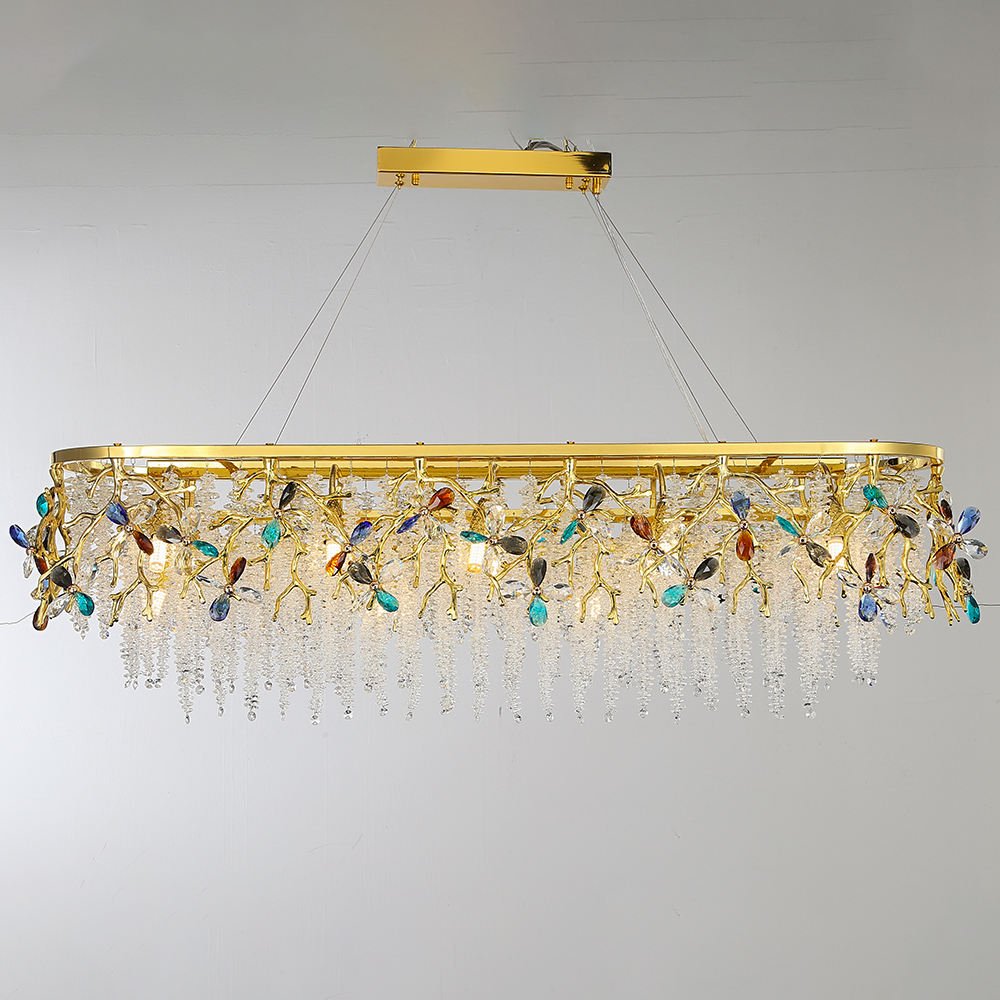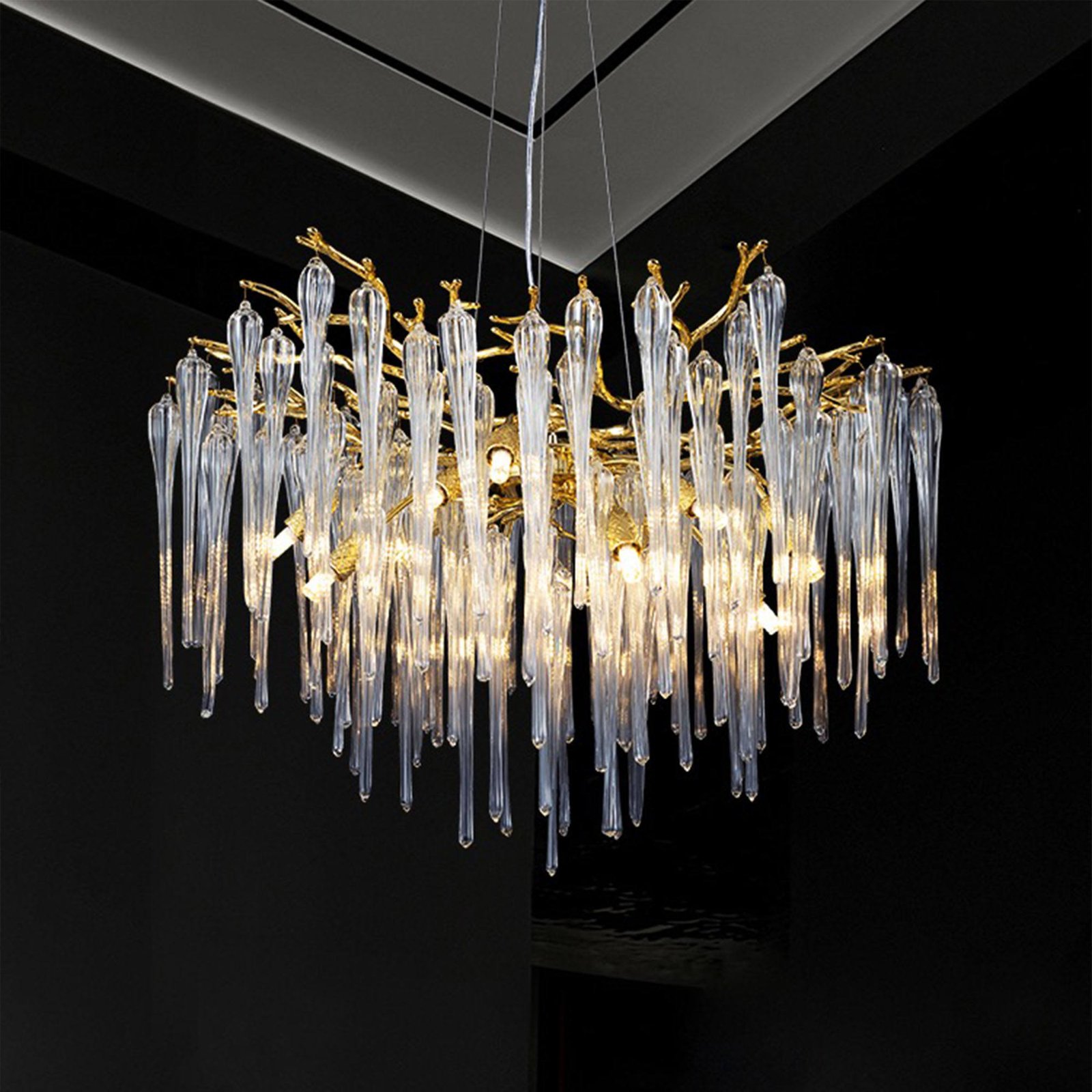Key Takeaways:
- What are Branch Chandeliers? Lighting fixtures designed to look like tree branches, often blending natural shapes with materials like metal, crystal, or glass.
- Variety of Styles: They come in many looks, from rustic designs using natural materials to modern and luxe versions with gold finishes and crystals. You can explore various styles of branch chandeliers to find one that fits your home.
- Where to Use Them: Great for dining rooms, living rooms, entryways, and even bedrooms. Consider the size of the room and ceiling height. Check out the best uses for various types of branch chandeliers.
- Artistic Statement: Many branch chandeliers are like sculptures, adding an artistic touch to lighting design.
- DIY Potential: You can make your own! There are guides available, like this step-by-step guide, but be mindful of common mistakes and always prioritize safety. Creative upcycling is also an option.
What Makes Branch Chandeliers So Special?
So, what’s the deal with branch chandeliers? Why do people seem to really like ’em lately? Well, I reckon it’s ’cause they do somethin’ pretty cool – they bring a bit of the outside, inside, but in a fancy way. It ain’t just like hangin’ a twig from the ceiling, no. These are proper designed lights. They take the shape of branches, sometimes really realistic, sometimes more abstract like, and turn it into a light fixture. You get that organic feel, that connection to nature, but it’s often mixed with materials like shiny metal, sparkly crystal, or smooth glass. It’s this mix that makes them kinda unique, don’tcha think? You could have one that looks like golden branches drippin’ with crystals, super glam, or one that’s more simple, maybe just black metal branches with bare bulbs for an industrial vibe.
I remember workin’ on a project once, big open living room with high ceilings. The client wanted somethin’ that was a real showstopper but didn’t feel too stiff or formal. We ended up choosing this huge, sprawling branch chandelier in an aged bronze finish. It filled the space perfectly, drew your eye up, and the light it gave off was warm and kinda dappled, almost like sunlight comin’ through trees. It totally changed the room’s feel. That’s the power they have, they’re not just for light, they’re a feature. They can be rustic, modern, arty, loads of things. The allure of branch light chandeliers really comes down to this blend of nature and human design, creating something familiar but also unexpected. It’s a way to add texture and shape to a room that’s different from your standard dome light or whatever. They just got a bit more personality, I guess.
Think about the materials too. You might see ones made from actual treated wood, which gives a real authentic, earthy feel. Or you get these amazing metal ones, finished in gold, silver, black, bronze, you name it. Then add glass elements – maybe shaped like leaves, like in that Ethereal Glass Leaf Cascade light, or like icicles hangin’ off a winter branch. The light plays off these different surfaces in interesting ways. A metal branch might reflect light sharply, while a glass leaf could make it softer, more diffuse. It’s not just about the shape of the branch, but how the whole thing interacts with light and shadow. It adds depth, you know? It makes the light itself part of the design, not just somethin’ that comes out of it. That’s why they work in so many different types of homes, from a cozy cabin to a super sleek modern apartment. They just fit.
Discovering Different Styles: From Rustic Charm to Modern Luxe
Right, so branch chandeliers ain’t just one thing. There’s loads of different styles out there, which is great ’cause it means you can likely find one that fits your place perfectly. Let’s break it down a bit. On one end, you’ve got the real rustic ones. These often use actual wood branches, maybe lightly treated or painted, or metal finished to look like bark. They feel very earthy, very connected to nature. Think log cabin vibes or a cozy farmhouse kitchen. These often look great with Edison bulbs, givin’ off that warm, vintage glow. They embrace natural materials in rustic designs, makin’ the wood or the texture the main feature. Simple, honest, kinda beautiful in their roughness.
Then you swing the other way, towards the modern and luxe styles. This is where things get interesting, I reckon. Designers take the basic branch idea and run with it. You see sleek metal branches, maybe in polished chrome or a bright gold finish, not trying to look exactly like real wood but capturing the idea of a branch. And then they add the bling! Think crystal droplets like frozen rain, glass leaves catching the light, or intricate metalwork that forms clusters like golden foliage. Look at something like the Luxe Gold Spiral Branch Chandelier; it’s clearly inspired by nature’s shapes, but it’s pure glamour. Or the Luxe Gilded Leaf Cluster Chandelier, perfect for a grand entrance. These ain’t tryin’ to hide the fact they’re man-made; they’re celebrating the artistry.
And then there’s everything in between, yeah? You might get a design that mixes a dark, textured metal branch with delicate glass shades shaped like flowers, like the Elegant Gold Lotus Flower Pendant. Or maybe something more abstract, like a linear design with branches shooting off, perhaps dotted with colorful crystals like that Gold Linear Branch Chandelier. Some focus on the silhouette, creating dramatic shadows, while others are all about how the light interacts with crystal or glass elements, creating sparkle. I once saw a fantastic one that used reclaimed copper pipes bent into branch shapes – kinda industrial, kinda rustic, totally unique. The point is, the “branch” concept is just a starting point. You can explore various styles of branch chandeliers and see just how wide-ranging they are. From nature-inspired elegance for a calm space to a bold statement piece for a modern loft, there’s likely a branch chandelier style that fits the bill. It’s about findin’ the one that speaks to your home’s personality.
Finding the Perfect Spot: Best Uses for Branch Chandeliers
Okay, so you’ve seen all the cool styles, but where do these branchy beauties actually go in a house? Where do they look best? Well, the good news is they’re pretty versatile, but some spots just seem made for ’em. One of the top places, I’d say, is the dining room. Hangin’ over the table, a branch chandelier becomes a real focal point. It defines the dining space, especially in an open-plan area. Imagine that Modern Golden Branch Crystal Raindrop Dining Chandelier – it adds drama and elegance right where you eat and entertain. The shape often spreads out horizontally, which works well over a rectangular table, lighting it evenly. Plus, it’s a great conversation starter during dinner parties, innit?
Living rooms are another prime spot. If you got decent ceiling height, a larger branch chandelier can really anchor the seating area. It adds that touch of nature or glamour, depending on the style you pick. For lower ceilings, you might go for a more compact design or one that spreads wide rather than hangs low. Think about the scale – a tiny chandelier gets lost in a massive room, and a huge one overwhelms a small space. I’ve seen people use smaller, simpler branch pendants in reading nooks or corners too, creatin’ a cozy little zone. It’s all about matching the light to the function and feel of that part of the room. You can check out some ideas on the best uses for various types of branch chandeliers to get more specific inspiration.
Don’t forget entryways and foyers! Talk about making an entrance. A stunning branch chandelier, like maybe that Luxe Gilded Leaf Cluster Chandelier if you have the space, sets the tone for the whole house right away. It says ‘welcome, we got style here’. Even in a smaller entryway, a well-chosen branch fixture can add character without taking up floor space. Bedrooms too – a softer, more romantic style branch chandelier can look amazing above the bed, adding a touch of elegance or rustic charm. Just make sure it’s dimmable for that relaxed evening vibe. The key thing is thinkin’ about the light it gives off. Some are more for ambiance, with lots of little lights spread out, while others might have stronger downlights for more focused tasks. Consider what you need the light to do in that specific spot, as well as how you want it to look.
Branch Chandeliers as Art: More Than Just Lighting
Let’s be honest, some lights are just… lights. They do the job, illuminate the room, fine. But branch chandeliers? Often, they’re way more than that. They really cross over into being art pieces, sculptures that just happen to light up. When you start looking at the more intricate designs, the ones using hand-blown glass, complex metalwork, or loads of crystals, you see the craftsmanship involved. They’re not just functional objects; they’re designed to be looked at, admired, even when the lights are off. Think about that Ethereal Glass Leaf Cascade Pendant Light. That’s not just a light source; it’s a delicate, flowing sculpture hangin’ from the ceiling. It plays with light and transparency in a way that’s purely about aesthetics.
This idea of incorporating art into lighting design is particularly strong with branch chandeliers because the form itself is so organic and visually interesting. A simple pendant is just a shape, but a branch has twists, turns, junctions – it’s got inherent character. Designers use this natural complexity as a canvas. They might accentuate the form with a striking finish, like high-gloss gold, or they might hang hundreds of tiny crystals from the ‘twigs’ to create a sparkling effect, like on the Golden Branch Chandelier with Crystal Icicle Pendants. The goal isn’t just illumination; it’s creating mood, drama, beauty. I remember specifying a custom piece for a hotel lobby once – huge, tangled branches made of dark bronze, with tiny pinprick LED lights embedded right into the metal. It looked incredible, like a captured piece of enchanted forest. It dominated the space, but in a really elegant way. People would just stand and stare up at it. That’s when you know a light fixture has become art.
Even the simpler, more rustic designs can have an artistic quality. A beautifully weathered piece of driftwood, carefully selected and wired with subtle lights, has a sculptural presence. It tells a story of nature and time. The key is that the form itself is considered just as important, if not more so, than the light output. These pieces are chosen to make a statement, to reflect the owner’s taste and style. They become central elements of the interior design scheme, not just afterthoughts. So when you’re choosing a branch chandelier, yeah, think about the light, the size, the practical stuff. But also ask yourself: Does this piece feel like art to me? Does it add something more than just lumens to the room? Because often, the best ones do exactly that. They elevate the space beyond just being well-lit; they make it visually exciting.
Embracing Rustic Vibes: Natural Materials and DIY Ideas
Now, let’s talk about the earthy side of branch chandeliers. If sleek metal and sparkly crystals ain’t really your thing, the rustic styles might be right up your alley. These designs really lean into the whole ‘bringing nature indoors’ idea. The focus here is often on the beauty of natural materials in rustic designs. Think real wood branches, maybe sourced sustainably, keeping their natural shape and texture. Sometimes they’re left completely raw, other times they might get a light stain or a whitewash finish to fit a specific decor style, like coastal or farmhouse. The beauty is in the imperfection – the knots, the twists, the unique form of each branch.
This rustic approach often pairs well with simpler lighting elements. Instead of elaborate crystal drops, you might see bare Edison bulbs with warm filaments, or simple cone shades made of metal or even burlap. The idea is to keep the focus on the natural form of the branch structure. I’ve seen some lovely examples where people have used found wood, like a piece of driftwood collected from a beach or a fallen branch from their own garden (properly treated and dried, of course!). There’s a real satisfaction in using materials that have a bit of history or a personal connection. These rustic branch chandelier designs often feel very grounded and calming, adding warmth and texture to a room. They work brilliantly in spaces with exposed beams, stone fireplaces, or lots of natural wood furniture.
The great thing about the rustic style is that it often lends itself well to DIY projects. If you’re reasonably handy and careful (especially with the electrics!), creating your own rustic branch chandelier can be a really rewarding project. You get to choose the exact branches, the finish, the type of bulbs, making something totally unique to your home. Maybe you find an interesting branch, clean it up, seal it, and then carefully wrap it with string lights. Or perhaps you’re a bit more ambitious and want to wire in actual sockets for pendant bulbs. There are tons of DIY rustic decor ideas online for inspiration. The key is to plan it out properly, especially thinking about how you’ll hang it securely and how you’ll manage the wiring safely. But the end result can be a stunning, one-of-a-kind piece that brings authentic natural charm into your space, and you made it yourself! That’s pretty cool, eh? Just be sure you know what you’re doin’ before you start messin’ with wires.
Thinking About DIY? A Step-by-Step Look (and What to Watch Out For)
Alright, so the idea of making your own branch chandelier has caught your eye? It’s definitely doable, and can be super satisfying. But it ain’t quite as simple as just grabbin’ a stick and some fairy lights, especially if you want something safe and long-lasting. Following a good DIY Branch Chandeliers: Step-by-Step Guide to Building Your Own is a smart move. Generally, the process goes somethin’ like this: first, find your branch (or branches). Look for hardwood that’s strong and dry – green wood will warp and shrink. Clean it really well, remove any loose bark or creepy crawlies, and let it dry completely indoors for weeks, maybe even months, to be sure. You might need to treat it with a sealant or pesticide too, just to be safe.
Next up is planning the lighting. Where will the bulbs go? How will you run the wires? You want it to look natural, so try hiding the wires along the tops or undersides of branches, maybe carving a shallow groove if you’re careful. Securing the wires with small staples or clips (the insulated kind!) is key. Then comes the tricky bit: wiring the sockets. This is where electrical knowledge is crucial. If you’re not 100% confident, seriously, get an electrician to check your work or do this part for you. You’ll need to connect the sockets in parallel, usually, and run a main cord up to where the chandelier will hang. Choosing the right fittings (sockets, bulbs, wire gauge) is important for safety and function.
Now, before you hang your masterpiece, you gotta think about the weight. Wood, especially hardwood, can be heavy. Add the weight of the wiring, sockets, and bulbs. You need to make sure your chosen branch can support itself and the fittings, and crucially, that your ceiling mount point can handle the total weight. This often means finding a ceiling joist, not just screwing into drywall. Use heavy-duty hooks or mounting plates designed for light fixtures. But even with a guide, there are pitfalls. It’s easy to make mistakes. Knowing the DIY Branch Chandeliers: Common Mistakes to Avoid can save you a lot of hassle (and potentially prevent a fire!). Common slip-ups include using wood that isn’t properly dried, overloading circuits, insecure mounting, exposed wires, or just making something that looks kinda messy rather than chic-rustic. Take your time, plan carefully, and don’t cut corners, especially on safety.
Safety First! Tips for Your DIY Branch Chandelier Project
Okay, let’s get serious for a minute. Making your own light fixture, especially one involving wood like a branch chandelier, means you absolutely have to put safety first. It’s not worth risking a fire or electrical shock just for a cool-looking light. There are specific DIY Branch Chandeliers: Safety Tips for DIY Lighting you need to follow, no exceptions. The number one rule? Electricity is dangerous. If you are even slightly unsure about wiring, how circuits work, wire gauges, grounding, anything electrical – hire a qualified electrician. Seriously. They can wire the fixture for you, or at least inspect your work before you install it. It’s money well spent for peace of mind.
Assuming you do have the skills, always, always turn off the power at the breaker box before working on any wiring, whether that’s connecting the chandelier or installing it in the ceiling. Use a voltage tester to double-check the power is off before touching any wires. Use the right materials – proper gauge wire for the load, UL-listed sockets and components, wire nuts for secure connections. Don’t just twist wires together and wrap ’em in tape! Make sure all connections are insulated and protected. Avoid running wires where they could be pinched or chafed by the wood. If you need to drill holes for wires, make sure they’re smooth so they don’t damage the insulation over time. Consider using low-heat bulbs like LEDs too, especially with wood, to reduce any potential fire risk from heat buildup.
Then there’s the physical safety – the mounting. As I mentioned before, these things can be heavy. You absolutely must secure it to a structural element in the ceiling, like a joist. Don’t rely on drywall anchors alone, they won’t hold. Use a stud finder to locate a joist. Use appropriate hardware – heavy-duty ceiling hooks or a proper electrical box rated for chandelier weight. Make sure the chain or mounting system you use is also rated for the chandelier’s weight, with a good safety margin. Think about the wood itself too. Is it fully dry? Wet wood conducts electricity better, which is bad. Is it treated against pests? You don’t want bugs munching on your wiring. Is it treated with a fire retardant? Might be a good idea, especially around the electrical components. Following these safety steps isn’t just recommended, it’s essential. Don’t let your cool DIY project turn into a dangerous hazard. Plan safe, build safe, install safe.
Upcycling Magic: Giving Old Materials New Light
One of the really neat things about the whole branch chandelier idea, especially the rustic and DIY side, is how well it fits with upcycling. Instead of buying everything new, you can often create something amazing by repurposing old stuff or using found natural materials. There are some brilliant DIY Branch Chandeliers: Creative Upcycling Ideas out there if you look. Maybe you’ve got an old, boring chandelier hangin’ around? Instead of tossing it, could you strip it down to its basic frame and wiring, and then attach your own found branches to it? You’d keep the safe, professionally made electrical core but give it a completely new, natural look. That’s a smart way to upcycle.
Finding the branches themselves is often an act of upcycling. Instead of buying wood, look around after a storm for interesting fallen branches (check local rules about collecting wood, though!). Or maybe a neighbour is pruning a tree? Ask if you can snag a few shapely pieces. Driftwood found on a beach (again, check regulations) makes for incredible, naturally sculpted chandeliers. The key is cleaning and preparing the wood properly, as we’ve discussed. But using found wood adds that extra layer of story and sustainability to your project. You’re literally giving discarded natural materials a new life as a beautiful object in your home. How cool is that?
Think beyond just the branches too. Got old glass jars? Cleaned up, they could become simple shades for your bulbs. Bits of old wire, metal scraps, even broken jewellery could potentially be incorporated as decorative elements, adding sparkle or texture. Maybe you could use parts from an old lamp base or wire structure. Look at things with fresh eyes – could this be part of a light fixture? The Luxe Gold Lotus Blossom Chandelier is obviously a high-end piece, but could its structure inspire an idea using, say, shaped metal from tin cans? Maybe not that design specifically, but the principle holds. Upcycling is about creativity and seeing potential where others see junk. It reduces waste, saves money, and lets you create something truly unique and personal. It might take a bit more imagination and effort than buying new, but the result is often far more rewarding, don’t you think? It’s about makin’ something with soul.
Frequently Asked Questions (FAQs)
- Q1: Are branch chandeliers difficult to clean?
A: It depends on the style! Simpler designs with smooth metal or wood might just need dusting. More intricate ones with lots of crystals or glass elements can be trickier. Using a feather duster regularly helps prevent buildup. For deeper cleans, compressed air can blow dust out of crevices, or you might need to carefully wipe elements with a microfiber cloth (turn the power off first!).
- Q2: What kind of light bulbs work best with branch chandeliers?
A: This really depends on the fixture’s style and the mood you want. Rustic styles often look great with vintage-style Edison bulbs (LED versions are best for energy efficiency and low heat). Modern or luxe designs might use candelabra bulbs, globe bulbs, or even integrated LEDs. Always check the fixture’s maximum wattage recommendations and consider dimmable bulbs for flexibility.
- Q3: Can I use real, untreated branches for a DIY chandelier?
A: It’s generally not recommended. Untreated wood needs to be thoroughly dried for weeks or months to prevent warping, cracking, and mold. It should also be cleaned and potentially treated for insects. Using completely raw wood might pose safety risks (moisture and electricity don’t mix) and durability issues.
- Q4: Are branch chandeliers heavy? Do I need special mounting?
A: Yes, many branch chandeliers, especially larger ones or those made from solid wood or heavy metal/crystal, can be quite heavy. You absolutely need to mount them securely to a ceiling joist or use a heavy-duty electrical box rated for the fixture’s weight. Do not rely on drywall anchors alone.
- Q5: Do branch chandeliers provide enough light for a whole room?
A: It varies greatly. Some are designed more for ambiance and visual appeal, providing softer, decorative light. Others have multiple bulbs or brighter LEDs and can serve as the primary light source for a moderately sized room. Often, they work best as part of a layered lighting plan, combined with lamps or recessed lighting. Consider the fixture’s total lumen output and light distribution.


